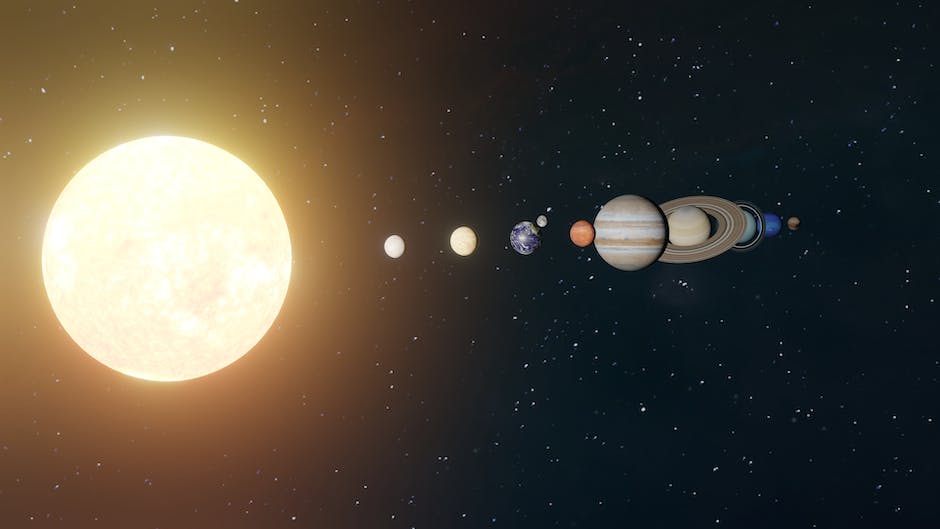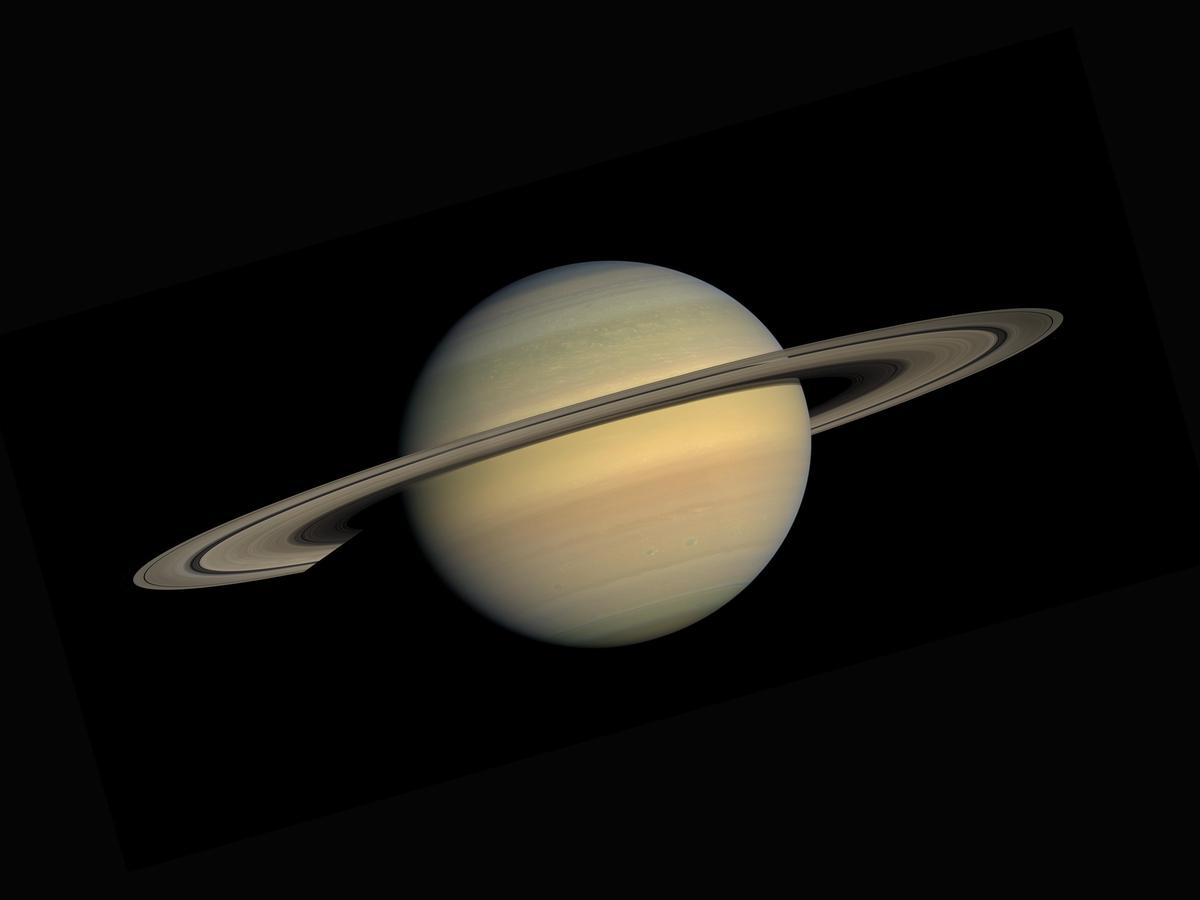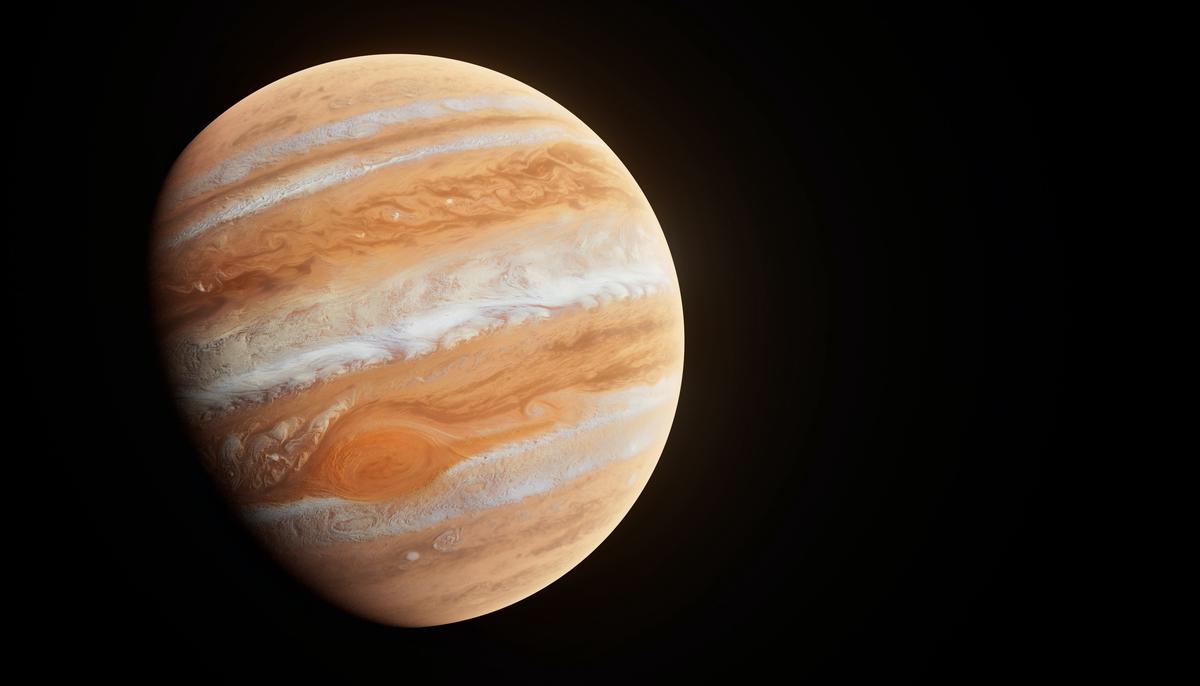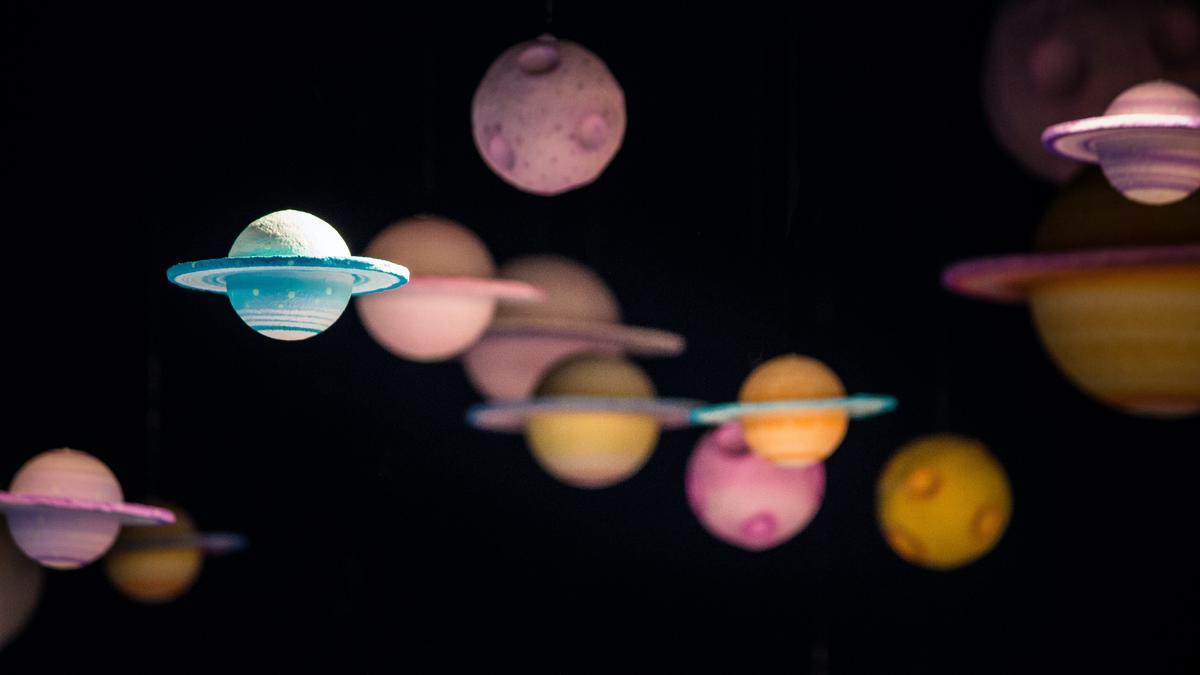Our solar system, a cosmic spectacle of diverse celestial bodies, is home to eight unique planets that constantly orbit our glowing sun. Among these fascinating spheres, Saturn, with its prominent ring system, stands out as a subject of curiosity and academic interest. This essay embarks on an enlightening journey, first providing a brief overview of the planets and their individual characteristics, with a particular focus on their size and mass. Then, shifting the spotlight to Saturn, we delve into the intriguing details of its physical traits, expansive rings, puzzling orbit, and numerous moons. Finally, to paint a more complete picture about where Saturn stands in terms of its size among the other celestial giants, we unroll a comparative study between the ringed planet and its biggest rival – Jupiter.
Overview of the Planets
Overview of the Planets in our Solar System
Our solar system consists of eight planets which revolve around the Sun. These planets are categorized into two types: four inner rocky planets (Mercury, Venus, Earth, and Mars) and four outer gas giant planets (Jupiter, Saturn, Uranus, and Neptune). Each of these planets has distinctive characteristics and unique features.
Size and Mass comparisons
In terms of size and mass, Jupiter is the largest and most massive of all the planets in our solar system. With a diameter of about 142,984 kilometers, Jupiter is so large that more than 1,300 Earths could fit inside it. In terms of mass, it has more than twice the combined mass of all the other planets in the solar system.
To give some perspective, if Saturn and Jupiter were hollow, Saturn could hold about 764 Earths, while Jupiter could hold over 1,300 Earths. This illustrates the remarkable difference in their sizes. Furthermore, Saturn is significantly less dense than Earth. If there were an ocean large enough, Saturn would float, while Earth would sink.
Unique Characteristics of Saturn
Although Saturn is not the largest planet, it has unique features that make it an object of fascination. Its ring system is the most extensive and complex in the solar system, with thousands of narrow, thin rings. The origin and composition of these rings continue to be a subject of ongoing scientific study. Also, Saturn is known for its high-speed winds in the upper atmosphere, which can reach speeds of up to 1,800 kilometers per hour, and its iconic hexagonal storm located at its north pole.
Summary
Despite its stunning beauty and incredible ring system, Saturn is not the largest planet in our solar system. In terms of size and mass, this title goes to Jupiter. What makes Saturn unique and awe-inspiring are not its size or mass but its beautiful rings and its less dense structure when compared with other planets.

Detailed Profile of Saturn
An In-Depth Look at Saturn and Its Comparative Size
Recognized as the sixth planet from the Sun, Saturn is a majestic member of our solar system. It derives its name from the Roman god of agriculture. More importantly, it’s renowned for its spectacular rings that have intrigued astronomers and space enthusiasts for centuries. The composition of Saturn, a gas giant, mirrors that of Jupiter, which is primarily hydrogen and helium.
When discussing the size, however, Saturn falls short of being the largest. Jupiter holds this distinction. Saturn stands at the second position, boasting a diameter of about 74,898 miles (120,536 kilometers). To provide a more relatable comparison, Saturn’s diameter, though only 83% the size of Jupiter’s, dwarfs our home planet by being nearly nine times larger than Earth’s diameter.
Distinct Characteristics of Saturn
One of the defining features of Saturn is its prominent ring system, the most extensive and complex in the solar system. Saturn’s rings are composed of countless small particles, ranging in size from tiny grains to giant chunks, all made primarily of water ice with traces of rocky material. These rings stretch out more than 120,700 kilometers from the planet but are incredibly thin – only about 20 meters thick.
Another peculiar aspect of Saturn is its low density. Despite its vast size, Saturn has the lowest density of any planet in our solar system. Saturn is lighter than water; this means if there were a bathtub large enough, Saturn would float!
Saturn’s Orbit and Rotation
Saturn has the second-longest orbital period in the solar system after Jupiter, taking roughly 29.5 Earth years to complete one orbit around the Sun.
As for rotation, Saturn has the second-shortest day in the solar system. A day on Saturn (the duration it takes to complete one full rotation on its axis) is only about 10.7 hours. This rapid rotation causes Saturn to have an oblate shape; it is noticeably flattened at the poles and bulging at the equator.
Saturn’s Moons
Saturn also boasts an impressive number of moons. To date, there are 82 known moons orbiting Saturn, the most famous and largest being Titan. Titan is the second-largest moon in the solar system and is larger than the planet Mercury. It also has a dense atmosphere, which is rare for a moon. Other notable moons include icy Enceladus, which has geysers that spout water vapor, and Iapetus, known for its contrasting coloration.
To wrap up, despite Saturn being a colossal planet with noteworthy characteristics such as its low density, intricate ring system, fascinating moons, and extraordinary orbital and rotational patterns, it does not claim the title of the biggest planet. Nonetheless, Saturn’s impact within our solar system is significantly meaningful.

Comparison of Saturn and Jupiter
Drawing a Comparison between the Sizes of Saturn and Jupiter
Saturn, characterized by its splendid rings, is the sixth planet from the sun and shares its classification as a gas giant with the planet Jupiter. Given their similar composition, both planets share many features. However, when it comes down to comparing sizes, Jupiter takes the lead.
Saturn’s equatorial diameter measures a substantial 74,898 miles, approximately nine times that of Earth’s diameter, making it significantly larger compared to most of the other planets. However, when put side by side with Jupiter, it falls short. Jupiter, being the fifth planet from the sun, boasts an equatorial diameter of roughly 86,881 miles, earning it the status of being the largest planet in our solar system, not Saturn.
Planet Volume and Mass Analysis
When considering volume, Jupiter also exceeds Saturn. Jupiter has a volume that could contain about 1,321 Earths, while Saturn has a volume that could encompass approximately 764 Earths. Again, this reconfirms Jupiter’s dominance in size over Saturn.
In terms of mass, Jupiter is again superior, weighing in at 317.83 times the mass of Earth. On the other hand, Saturn’s mass is approximately 95.16 times that of Earth. This difference in mass is due, in part, to the difference in composition. Jupiter has a heavier core and more dense materials than Saturn.
Atmospheric Characteristics
Both planets consist primarily of hydrogen and helium, with traces of methane, ammonia, water vapor, and other compounds. On the surface, Saturn and Jupiter might seem similar, but beneath their cloud decks, differences become apparent. Jupiter has a stronger internal heat source, which drives more complex and energetic atmospheric activity. This includes features like Jupiter’s famous Great Red Spot.
On the other hand, Saturn’s atmospheric activity is less vigorous than Jupiter’s. However, Saturn’s dazzling ring system, composed primarily of ice particles with a smaller amount of rocky debris and dust, is far more extensive and complex than Jupiter’s faint, thin rings.
In conclusion
While Saturn is one of the largest planets in the Solar system and has an exceptional ring system, Jupiter retains the title as the biggest planet in terms of diameter, volume, and mass.

Photo by planetvolumes on Unsplash
With the intricate details and numerical data presented above, readers now possess a comprehensive understanding of the celestial marvel that is Saturn. We’ve explored its physical characteristics, wondrous rings, mysterious orbit, and its moons, together forming a cosmic ballet that has mesmerized stargazers for centuries. Upon comparing it with Jupiter, another monolith of the cosmos, we find that even though it comes close, Saturn does not beat Jupiter when it comes to size. This ensures a clear perspective about Saturn’s stature as compared to the other planets in our solar system. Yet, despite not being the largest, Saturn, with its elegant ring system and enticing mysteries, remains an enchanting force that continues to captivate both the scientific community and space enthusiasts worldwide.
FAQ
What is the biggest planet possible?
The laws of planetary formation and material availability in protoplanetary disks limit the size of the largest planet that could exist in our universe. The largest planetary bodies are gas giants such as Jupiter and Saturn, but there is a theoretical limit beyond which a celestial body might become a brown dwarf, a type of low-mass star. Around young stars, these disks accumulate dust and gas, which gives rise to planets as a result of gravitational interactions. A planet would be categorized as a brown dwarf and begin to undergo processes more typical of star formation, like nuclear fusion, if its size exceeded a particular threshold. There is a limit to how big a planet can get without going into the neighborhood of tiny stars, however the precise upper limit is still unknown, making gas giants like Jupiter some of the most massive planets in the universe.
What is the biggest in the universe?
While intriguing, the idea of the “biggest” thing in the cosmos is difficult to pin down. The cosmos is enormous and has a wide range of structures and objects with different sizes. Galaxies with billions of stars, like the Milky Way, can span hundreds of thousands of light-years. Galaxy clusters, such as the Great Wall of Hercules and the Corona Borealis, are enormous cosmic formations spanning billions of light-years. The diameter of the observable universe is thought to be roughly 93 billion light-years. Although these are some of the largest known objects, there may be structures on the universe’s real scale that are not yet known to science. The universe is a constantly changing and breathtaking subject of inquiry and discovery, and as our awareness of it grows, so does our appreciation of its immense size and complexity.
Is Jupiter 1000 times bigger than Earth?
Although Jupiter is substantially larger than Earth, its diameter and volume are not 1000 times greater. For a more accurate comparison, Jupiter has a diameter of around 11 times that of Earth and a volume of about 1,321 times larger. Jupiter is more than 300 times more massive than Earth in terms of mass. Despite the fact that Jupiter is one of the biggest planets in our solar system, the 1000-fold difference you said is greatly overstated. The stark contrasts in scale and magnitude between our planet and the biggest gas giant in our solar system are brought to light by these comparisons.
Could Jupiter become a star?
Despite being a large gas giant, Jupiter cannot turn into a star by nature. A celestial object must start and maintain nuclear fusion in its core, mainly the fusing of hydrogen into helium, in order to be classified as a star. This ongoing nuclear fusion process, which produces heat and light, powers stars like our Sun. Conversely, Jupiter lacks the core mass and pressure required to initiate nuclear fusion. Like stars, it is mostly made of hydrogen and helium, but it doesn’t have the critical mass needed for the continuous fusion reactions that characterize stars. Because of this, Jupiter is still a gas giant planet and cannot become a star according to accepted astrophysical principles.
How did Jupiter get so big?
The main cause of Jupiter’s enormous size is because it formed in the early solar system. It started off as a cloud of gas and dust encircling the newborn Sun in the protoplanetary disk. Jupiter gathered a significant amount of gas and dust, especially hydrogen and helium, which were prevalent in the solar nebula, as the Sun’s gravity dragged material inward. These gases gathered in Jupiter’s expanding core with other elements, producing a strong gravitational field. Jupiter’s mass may rise much further as its core developed and attracted additional gas. This process went on until the protoplanetary disk’s leftover gas was removed by the solar wind of the young Sun, stopping Jupiter from accumulating new material. Jupiter is the largest planet in our solar system as a result of the accumulation of gas and dust over millions of years that formed a huge gas giant.
How hot is Jupiter?
The depth of Jupiter’s atmosphere affects the planet’s temperature. The gas giant lacks a solid surface, but it probably has a very hot and pressurized core. Temperatures can fall as low as -145 degrees Celsius (-234 degrees Fahrenheit) in its higher cloud layers, where features like the Great Red Spot are visible. But because of the intense pressure, the temperature increases noticeably as one gets closer to the planet’s interior. Tens of thousands of degrees Celsius may be reached at Jupiter’s core, which is thought to be made of heavy components. Both gravitational compression and leftover heat from the planet’s formation provide this heat. It is believed that Jupiter’s core temperature is closer to that of a star than it is to that of a normal planet.
![]()
